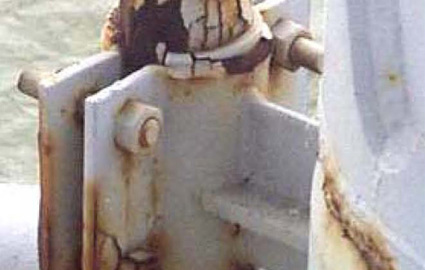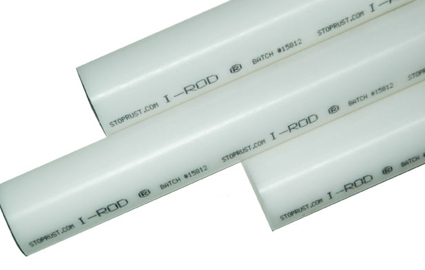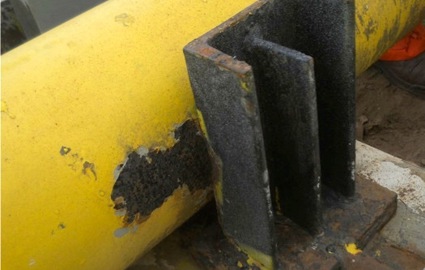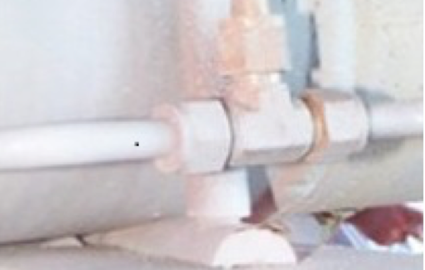Technical Paper
Pipe supports: A nagging corrosion problem solved
by Jim Britton (1998) from Pipeline and Gas Journal
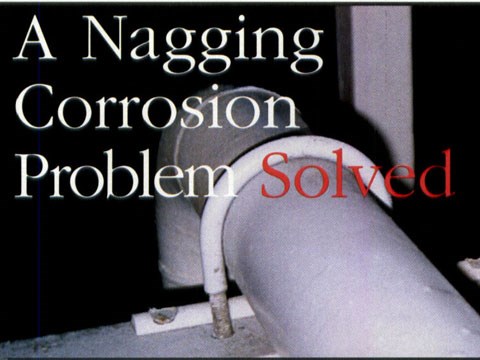
Figure 1
During routine inspections of offshore oil and gas production facilities in the Gulf of Mexico, a recurring problem has been noted: The corrosion on piping systems which often leads to piping failure. Why are pipe support points prone to such localized corrosion and what can be done to prevent it?
In all cases, localized corrosion begins with coating failure; the presence of water and oxygen promote corrosion of the exposed steel. The problem is often aggravated by the presence of bimetallic (galvanic) couples and by oxygen concentration differences caused by crevices. The result is a localized corrosion attack which causes significant wall loss.
Consider some of the more common types of pipe supports used and we can see why the problems arise:
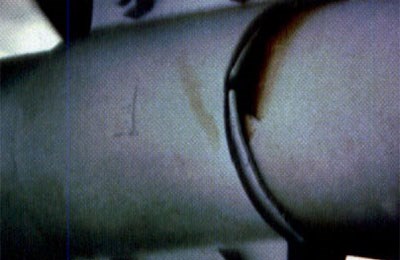
Figure 2 - Saddle clamps
Saddle clamps
Saddle clamps are widely used (especially on larger diameter pipe), as they offer excellent mechanical support. They are used on both horizontal and vertical pipe runs. They are, however, a potential corrosion hot spot. The saddle clamp often has a rubber liner designed to protect the coating on the pipe during installation. Sometimes this liner is required to provide electrical isolation between the pipe and clamp. In either case, the result is a tight crevice at the pipe surface. The crevice is so aggressive that any water falling onto the pipe in the area of the clamp may be sucked into this crevice by capillary action.
Once in there, it is difficult for the water to escape, so the pipe surface stays wet. Pipe coatings (paint) used on topside piping are designed to protect the pipe from atmospheric corrosion; they were never intended for immersion service. However, that is the service they find under these clamps. The result is softening and failure of the paint and corrosion is able to proceed uninhibited. Saddle clamps offer other disadvantages: They provide for no inspectability under the clamp, they are expensive and they are rarely removed during maintenance painting so that the coating can be repaired.
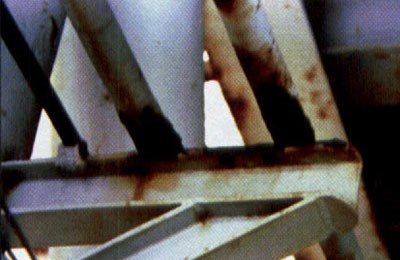
Figure 3 - Beam supports
Beam supports
This is a very common method of supporting multiple parallel pipe runs. The pipes are usually stabilized with a U-bolt and it is not uncommon to see a neoprene pad installed under the pipe. The neoprene pad is designed to stop paint damage during installation and to reduce metal-to-metal contact. In truth, it aggravates the problem. Being soft, the material deforms under the weight of the pipe and forms a very aggressive crevice at the pipe surface. Paint failure then ensues by the same mechanisms as previously described.
Again, inspectability is poor and access for maintainence with painting is poor. This is, however, a very attractive support method because it is inexpensive and flexible for piping designers. Also, the U-bolts offer much greater inspectability and maintainability than saddles.
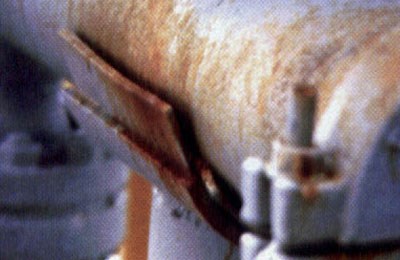
Figure 4 - Half-saddles and cradles
Half-saddles and cradles
In many cases, these types of support could be substituted for multiple U-bolt type clamps and a lot of the problems would disappear. However, the point of contact at the beam or in the bottom of the cradle will always be a concern. The same problems of moisture retention, poor inspectability and maintainability apply to these support types.
Other solutions
The industry has recognized the problems for a long time and has put some effort into solving the problems. Some of the solutions are more effective than others.
Sealants
In an attempt to seal the crevices and prevent moisture ingress, various types of silicone and epoxy sealants and caulks have been used. These typically don't work because there is no chemical bond established between the sealant and the painted or corroded steel surface. In fact, these attempts often make the problem worse by forming additional crevices when they bond.

Figure 5 - Pads
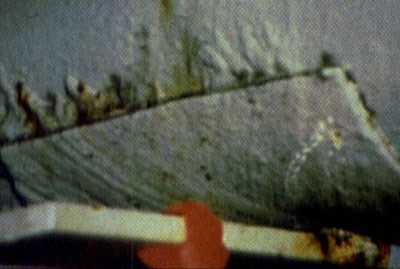
Figure 6 - Pads
Pads
Curved fiberglass pads are sometimes used, and can work if installed on well-prepared pipe and are properly sealed. However, there is a risk if the pad becomes disbonded. Heavy neoprene rubber pads are not a good idea for reasons previously discussed.
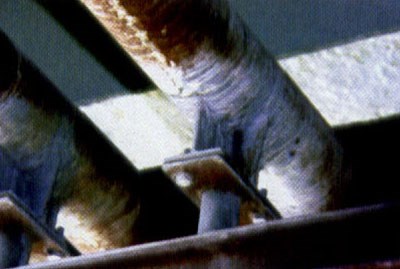
Figure 7 - Welds
Welds
Supports which stand the pipe off the support and eliminate the crevice by direct welding to the pipe are generally successful. They are also expensive and require additional NDT during construction. If it is permissible to weld to the outside of the pipe, this can be the best overall long-term solution.
The ideal solution
If we are to design the ideal solution, it should achieve the following goals:
• Eliminate the crevice and thus the ability to hold water in contact with the pipe
• Be simple to install either on new or existing piping systems not requiring hot work
• Be inexpensive
• Provide inspectability and maintainability
• Eliminate metal-to-metal contact.
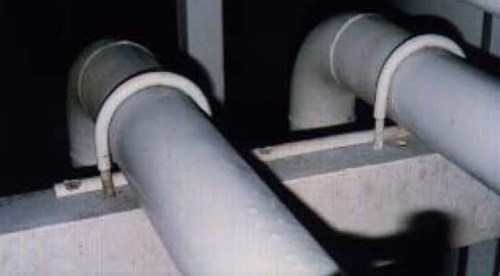
Figure 8 - I-Rod® or I-Rods®
I-Rods® are half-round rods made from a high-strength thermoplastic material. When placed between the pipe and the support, it achieves all the ideal solutions. The curved surface against the curved surface of the pipe minimizes contact area and water is shed from the pipe surface. The separation created also provides good access for inspection and maintenance while eliminating metal-to-metal contact.
Easily installed either in continuous lengths across the top of pipe support beams or as an integral part of a U-bolt assembly to replace saddle clamps, the rods provide a cost-effective solution to the problem. I-Rods® have been in service on hundreds of offshore platforms in the Gulf of Mexico since 1989. Performance has matched or exceeded all expectations of the operators specifying them.
Want to receive an email when Deepwater publishes new corrosion-related technical papers, case studies, and more? Sign up for our Corrosion Newsletter using the form below. You can unsubscribe at any time.



